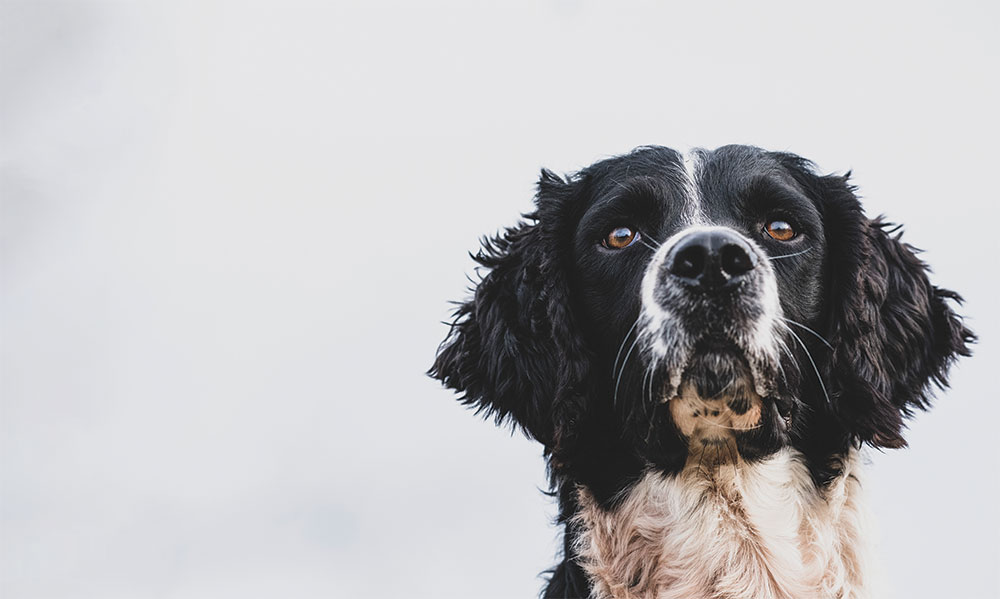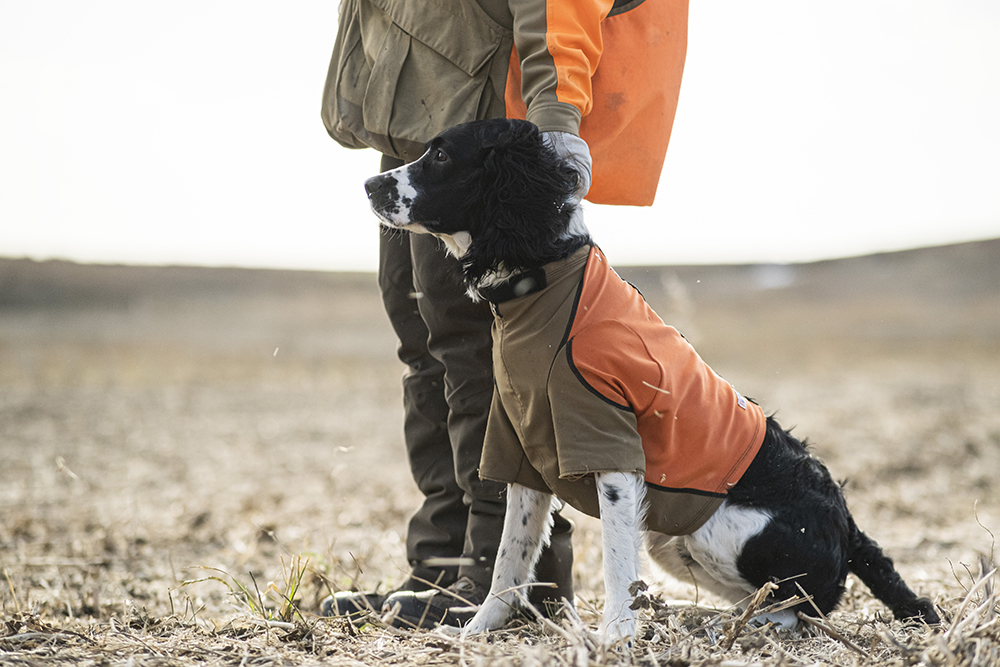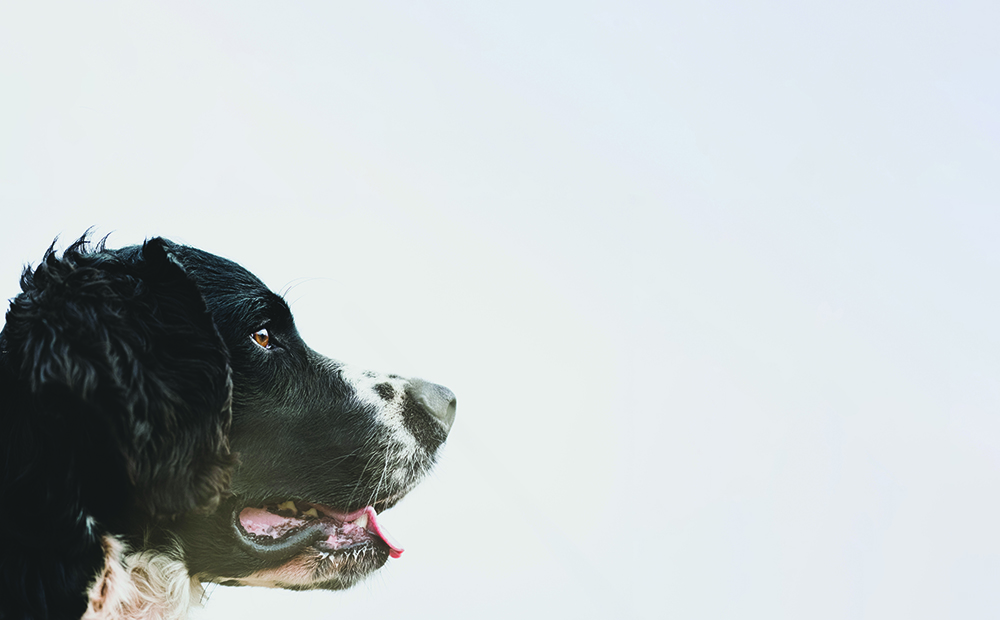Building Bonds

Nothing on this earth brings smiles to our faces more than a picture of a puppy. Admit it. This fact is undeniable. Small furry bodies warmly fit easily in two hands when held. Eager eyes twinkle with love and wonder and loyalty when looking back at you. Energy exudes as they clumsily run across the grassy yard. A puddle of a pup melts in your lap after a long day of play. A bond between bird dog and owner seems intimate and eternal, hopefully, if all goes well. Nothing shows the potential of the uplands more than a picture of a puppy.
When you finally make that fateful decision to bring a puppy home, everyone wants the pick of the litter. Legend has it that you must choose the quiet one that waits hesitantly in the background. For sure, they’ll remain calm and biddable throughout future years. Others say you need to pick the bold and hard-charging leader of the pack. For sure, they’ll be aggressive and push the boundaries to find you more birds. But puppies are like our children—they are all different and have minds of their own. And picking a puppy is like gambling—you just never know how your hand might play out. If you do your due diligence and find a well-bred litter with good bloodlines, the rest is up to you.
No matter which puppy you pick, each one possesses inherent promise. But always remember that a pup in hand brings with it just as much responsibility as it does opportunity. How do you unlock these top talents and abilities? How do you create the close connection that fosters a lifelong bond with your bird dog?

When seeking answers of such import, it is essential to research a resource with credibility and integrity. So, I did, and no one knows the prospect of puppies more than Sophie Haglin. For four decades, Sophie has whelped almost every litter of English springer spaniel puppies that Pine Shadows has ever whelped—all inside her own home near Brainerd, Minnesota. She has held countless puppies in her care and understands the eager eyes, exuded energy, clumsy moves, exhausted napping, and the pure potential for these dogs.
The legacy of Pine Shadows English springer spaniels started in 1975 when Sophie bought a springer for her soon-to-be husband, Mark Haglin, when he graduated from the University of Minnesota with a degree in agricultural education. Two years later, Sophie graduated from the same university with a degree in animal science, and the two were soon married. They became fascinated with the competition and breeding practices ingrained in the world of springer spaniel trials. They combined their passion for these dogs with their educational backgrounds to form the vision for the future of Pine Shadows with the goal of being the premier English springer spaniel breeder in the United States.
And the Haglins succeeded in their mission. They adopted a policy of utmost customer care, respect, integrity, and honesty. “Our heritage spans over four decades. We are consistently refining our ability to communicate quality with our English springer spaniels, priding ourselves on the attention, education, and personal detail given to every client, employee, and our community,” Mark said. In fact, Pine Shadows was the first English springer spaniel breeder to receive approval from the Orvis endorsement program.

The Pine Shadows reputation achieved over decades of raising dogs speaks for itself. The experience of placing innumerable puppies in the homes of prospective bird-dog owners makes them a great source to answer the questions we seek: What happens next for puppies? How do we form the bond and set them up to reach their potential?
The Pine Shadows process to create this close connection is called imprinting. When described, this training technique is detailed, yet simple. Mark and Sophie say, with a laugh, “Our employees are paid to play with puppies,” which they acknowledge really isn’t true. The practice is scientific, strategic, and meant to put their dogs in the best positions and situations to succeed.
The method of imprinting is a combination of the Haglins’ educations in agriculture and animal science along with the essential ingredient: a history of experience with bird dogs over time. When implemented frequently and consistently to the puppy years and beyond, the result includes elements of trust, care, safety, and loyalty for the dogs and their owners throughout a dog’s life.
Their staff consists of relationship builders. They understand how to develop a dog that is socialized and easily adaptable to individual families. The connection between human and puppy starts from birth and has allowed Pine Shadows to provide customers with better compatibility between dogs and humans so that puppies fit the families and homes where they are placed.
Joannie Peterson, who has worked with Pine Shadows for over 25 years, says that her favorite part of the job was working with the puppies. She made the point that imprinting is not just simply handling or socializing puppies—the program is an actual plan that puts strategic stress upon the dogs in a positive manner so that they learn to deal with the uncomfortable situations when they encounter them in the future. The process also facilitates the bond between human and puppy because of the complete and comprehensive touch points between the two. Imprinting builds the bond with our bird dogs because it forms loyalty and trust that you can’t always recognize with the naked eye.

At one week old, puppies are moved from the Haglin home to the kennel where the imprinting starts. At this point, puppies are beginning to discover the world by seeing, hearing, and starting to walk. Pine Shadows staff members sit in with the puppies’ mom for the first time to make sure the experience is calm—some moms are more protective than others. The staff starts working the puppies’ pressure points—the paws, ears, eyes, and others. In addition, the pups are exposed to new and uncomfortable experiences: being lifted up in in the air, carefully flipped upside down, and turned on their side.
Puppies are also introduced to new activities: playing in a room of cardboard boxes with holes in them so they are challenged, forced to think and climb and figure things out. Wobble boards—flat boards on a bubble used for exercise—push the dogs to balance and make quick movements and sometimes maneuver through scary situations. Puppies start simple retriever training at seven weeks old and enjoy quartering sessions in the field before going home with a new owner.
All of the touching and new experiences not only expose puppies to strategic stress but also increase trust with their handler. If the puppy struggles at any point during imprinting, it is firmly, yet gently, held until calmed, which ensures the puppy understands appropriate behavior. When done consistently, handlers make it easy for puppies to act the right way.
This imprinting connection will last for around 10 minutes per session, four to five times per week, until the pups are 10 weeks old. When ready to go home with a new owner, the puppies have been eating food and sleeping in crates to learn that this is their safe place. If the new family has young children, the staff will ask them, “Do you like to read?” They’ll teach unique tricks like having the kids read books to the puppies. Ten minutes of reading a book to the pups while they are leashed, when done consistently, can teach the dogs to stay calm and helps to build that bond with the family. These imprinting, retrieving, quartering, crate-training, and even “story time” techniques are always taught to new owners in person with encouragement to continue throughout puppyhood, if possible. Puppy owners are presented with a Pine Shadows puppy manual that lays out a future training plan.

In addition to imprinting, the Pine Shadows processes for breeding and for matching puppies with owners are quite sophisticated and extensive. For breeding, Mark has developed a selection index that rates prospective springers to lead their breeding program. This index is based off the same theory used for breeder selection in the cattle industry. Each dog is rated on a particular scale that ranks dogs based on certain selective traits. If a dog doesn’t meet the ranking chosen for breeding, it doesn’t mean it is a bad dog for an owner or hunter. It just means that Pine Shadows maintains very high standards for perpetuating their bloodline of English springer spaniels for the future.
Pine Shadows has also developed a seven-step fitting process that correlates the personality and desires of proposed owners with the expectations and behavior of a Pine Shadows springer. Their system has been constructed to produce a high-quality dog that adapts to a wide array of lifestyles and increases the likelihood of building a successful relationship. Because the connection between a springer puppy and owner is so important, the Haglins guarantee purchased puppies or started dogs for hunting ability, health, and temperament conforming to lifestyle.
What is the reason for the high standards for selection and imprinting and fitting for their springers? The answer to that is easy: Pine Shadows strives to build the best possible lifelong bond between their dogs and the humans. The true beauty of this partnership is how readily apparent it manifests itself in the field. Proper imprinting in the puppy years creates a cooperative dog in the future. This relationship benefits the dog’s safety before, during, and after every hunt.
For example, watch a Pine Shadows springer on the tailgate after a hard day on the prairie. Hunters are exhausted, and, of course, the dogs are too. Despite this, the dogs literally and intently mind their owner and melt in their arms while being checked for any physical injuries or ailments before being ready for the evening’s rest and relaxation. This includes checking and rinsing eyes for seeds and debris, feeling paws for punctures or cuts, and examining mouths and ears and undersides and so on. All the while, the dogs stand calm and cooperative. As they get older, the tailgate touch is good for their muscles, almost like a massage, to help them cope with working so hard on the prairies and in the cattails.

This alliance shows itself most when serious injuries occur. Even when a dog unfortunately falls victim to a possible pitfall of the uplands, such as a cut from a barbed-wire fence, an encounter with a porcupine, or a puncture by a stick, a properly imprinted companion will not struggle when aided or inspected. They don’t fight back because all of these touches have been consistently administered for years—all the way back to the first weeks of puppyhood. They are used to it and expect it. The imprinting is part of their life and is no big deal to the dogs.
When that picture of a precious puppy inspires us to call a breeder, we all have that poetic vision for the glory of chasing birds after anticipated sunrises for years to come. We envision hard-charging hunts and images of birds held with friends and family. We yearn for naps and cuddles with our dogs on the couch while watching football games. We want the close connection that defines what it means when we say “man’s best friend.”
Joannie said that she loves springers because, “They are like the kid who always prefers to press the buttons. I like that in a dog. But they are also the ones who will lie right next to you on the couch when it is time to relax.”
I agree with Joannie. That is the definition of a true connection with your bird dog—bold in the field and bonded with the family at home. The uplands are lucky to have bird-dog professionals like those at Pine Shadows—people who do their due diligence, uphold high standards, and take sincere care to create this connection from puppyhood, all for the future of building those extraordinary bonds made between bird dogs and humans.
Originally published in Volume 10, Number 3 (April-May 2022) of Covey Rise.
























